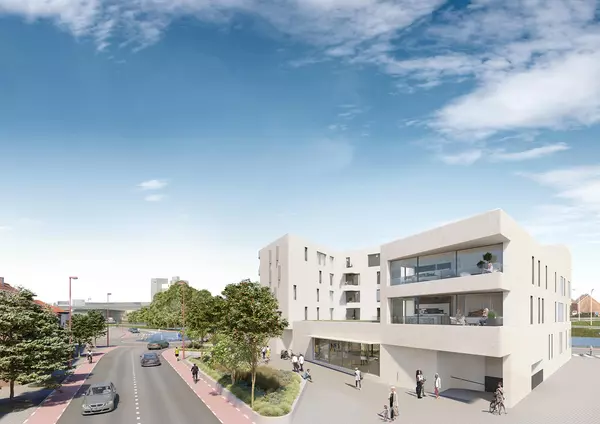
Fall 2024 Real Estate Market Predictions: What to Expect
As we head into fall 2024, the housing market is showing a mix of promising opportunities and potential challenges for both buyers and sellers. Here’s a look at some key trends to watch out for: 1. Condo Inventory on the Rise Condo listings across Canada, especially in cities like Toronto, are seeing a sharp increase in inventory. In the Greater Toronto Area (GTA) alone, active condo listings surged by over 60% year-over-year (Zoocasa.com). This rise in available units is putting downward pressure on prices, making fall a more favorable time for buyers interested in entering the condo market. Buyers should be aware, however, that price drops may not always indicate a decrease in overall property value, but rather the variety of homes available on the market. 2. Fierce Competition for Family Homes Despite a general increase in inventory, demand for family-sized homes in sought-after areas, particularly those close to schools, remains high. Many homeowners in these regions are hesitant to sell, leading to pent-up demand for homes with multiple bedrooms, yards, and proximity to local amenities (Zoocasa.com). Buyers targeting these properties may still face bidding wars, despite overall softer market conditions. 3. Multi-Residential Opportunities Investors may find unique opportunities in multi-residential properties this fall. Due to rising costs, many investors are offloading duplexes, triplexes, and fourplexes at competitive prices, especially in the GTA (Zoocasa.com). For first-time buyers, purchasing such properties can offer a significant advantage, as rental income can help offset mortgage costs. 4. Interest Rate Cuts Could Drive Renewed Buyer Interest The Bank of Canada has cut interest rates three times this year, most recently lowering them to 4.25%(Zoocasa.com). These rate cuts, along with decreasing fixed mortgage rates, are expected to reignite buyer activity, especially as borrowing costs become more manageable. This, combined with increased inventory, creates an opportune moment for buyers to act before rates potentially fall further by year’s end. 5. Pre-Construction Market Challenges The pre-construction sector continues to face headwinds due to rising interest rates. Many developers are forced to offer discounts, leading to "firesales" in some markets(Zoocasa.com). Buyers interested in pre-construction should proceed with caution and consult with experienced agents to ensure they secure favorable deals. In conclusion, fall 2024 presents a dynamic market with a variety of opportunities, particularly for buyers. Increased inventory, lower interest rates, and softened prices create a window for those ready to make a move. However, navigating this market requires insight and strategy, so working with a knowledgeable real estate professional is key to making the most of these conditions. For more information on these trends and how to take advantage of the fall market, reach out to Ali Bolourchi's team for expert guidance.

Transitioning from Residential to Commercial Real Estate Investing
Many real estate investors start with residential properties due to the lower entry costs, simplicity of management, and familiarity. However, as they gain experience and seek to diversify their portfolios or achieve higher returns, they often consider moving into commercial real estate. This diversification, while potentially profitable, requires a good understanding of the distinctions between residential and commercial real estate and the unique challenges associated with commercial investments.Differences Between Residential and Commercial PropertiesBefore making the switch, investors should be aware of the fundamental differences between residential and commercial properties.Valuation MethodsUnlike residential properties, which are often valued based on comparable sales in the area, commercial properties are typically valued based on their income-generating potential. Key metrics include Net Operating Income (NOI) and capitalization (cap) rates. NOI represents the income a property generates after operating expenses, and the cap rate is used to estimate the investor’s potential return on investment. Understanding these concepts and how they affect property valuation is crucial for commercial real estate investing.Lease StructuresThe structure of leases in commercial real estate is significantly different from residential leases. Commercial leases tend to be longer, often ranging from five to ten years. They can include provisions that pass certain expenses, such as property taxes, insurance, and maintenance, onto tenants. For example, in a triple net lease, tenants are responsible for most property-related expenses other than structural repairs. This reduces the landlord’s management burden and financial risk compared to residential leases, which are typically shorter, often one year or less, and do not pass on these costs.Tenant RelationshipsIn commercial real estate, the landlord-tenant relationship is more of a business partnership. Tenants are often businesses themselves and may require significant customization of the leased space to suit their operational needs. Lease negotiations can be more complex, involving specific terms related to the use of the space, maintenance responsibilities, and rent escalations. Understanding the business needs of tenants and maintaining a professional relationship is vital for long-term success.Assessing Risks and RewardsWhile commercial real estate can offer higher returns and more stable cash flow, it also comes with increased risks. Investors should carefully consider the following:Market CyclesCommercial real estate is more sensitive to economic cycles compared to residential real estate. During economic downturns, businesses may cut costs by reducing office space or closing locations, leading to higher vacancy rates and reduced rental income. It’s important for investors to understand how different types of commercial properties—such as retail, office, and industrial—respond to economic shifts and to select properties in sectors that align with their risk tolerance.Vacancy RisksOne of the primary risks in commercial real estate is the potential for longer vacancy periods. Unlike residential properties, where demand for housing tends to remain consistent, commercial properties can sit vacant for extended periods if the market demand is low or the space does not meet the needs of prospective tenants. Effective tenant screening, offering competitive lease terms, and maintaining good relationships with existing tenants can help minimize vacancies and ensure consistent cash flow.Regulatory EnvironmentCommercial properties are subject to a more complex regulatory environment than residential properties. Zoning laws, environmental regulations, accessibility standards, and building codes, including the National Building Code of Canada, can all impact the viability of a commercial property. Investors must be diligent in understanding these regulations and ensuring compliance. Keeping abreast of changes in the regulatory landscape is also important for long-term success.Building a NetworkSuccessfully transitioning into commercial real estate requires building a strong network of professionals who can provide support and guidance. Commercial Real Estate BrokersThese brokers specialize in commercial properties and have a deep understanding of the local market. They can provide valuable insights, access to listings not publicly available, and guidance on market trends. Working with a knowledgeable broker can help investors identify and acquire properties that align with their investment strategy.Lenders and Financial AdvisorsCommercial real estate transactions often involve larger sums of money and more complex financing structures than residential deals. Establishing relationships with lenders who specialize in commercial real estate can be beneficial for securing favourable loan terms. Additionally, financial advisors can provide strategic advice on deal structuring, risk management, and portfolio diversification.Experienced InvestorsNetworking with seasoned commercial real estate investors can provide practical advice and mentorship. Experienced investors can share insights from their own successes and challenges, helping new investors avoid common pitfalls. Joining industry associations, local investment clubs, or online forums can facilitate these connections and provide access to valuable resources and learning opportunities.Transitioning from residential to commercial real estate investing can be a rewarding move for those who take the time to understand the key differences between the two, thoroughly assess the associated risks, and build a strong network of industry professionals. By approaching commercial real estate with the same diligence and strategic planning as residential investing, and by continuously educating themselves on market trends and regulatory changes, investors can successfully diversify their portfolios and potentially achieve higher returns.

Scaling Your Real Estate Portfolio: Lessons Learned from Managing Multiple Properties
As a real estate investor, scaling your portfolio is a natural progression once you’ve gained confidence and experience in managing a single property. However, the jump from managing one property to handling multiple can feel like a big one, which isn’t surprising, as it’s a substantial shift in responsibilities. It’s important to have a solid foundation first, to ensure a smooth transition and continued success, and be prepared. To help others with the preparation aspect, here are some of the lessons I’ve learned from taking this leap. Understanding the Challenges of Scaling Managing a growing real estate portfolio comes with its own set of challenges. The complexity increases as you juggle multiple properties, each with its unique needs, tenants, and maintenance requirements. Additionally, financing becomes more intricate as you seek to leverage your existing assets while securing new ones. Building a Solid Foundation Before you scale, it’s crucial to have a solid foundation. This means ensuring your current properties are running smoothly, with reliable tenants and consistent cash flow. If you’re struggling with a single property, scaling will only amplify those challenges. Take the time to refine your processes, streamline operations, and build a reliable team that can support your growth. Effectively Managing Time Time management becomes even more critical as your portfolio grows. Real estate is a business, and it needs to be run efficiently. The daily tasks that are manageable with one or two properties can quickly become overwhelming with more. Strong systems and automating tasks, whenever possible, are essential. Property management software helps track rent payments, maintenance requests, and tenant communications. If you haven’t done so already, consider outsourcing tasks like property management or bookkeeping to free up your time for strategic decision-making. Develop partnerships with trustworthy contractors, maintenance personnel, and other professionals, or have them on retainer, so you have access to the skills and expertise you need – when you need them. Optimizing Cash Flow Keeping a positive cash flow is important when managing multiple properties. Optimizing cash flow by ensuring rent payments are consistent and carefully monitoring expenses will help. Review your expenses regularly, look for ways to reduce costs, and ensure your rental income covers all operational expenses. Effective budgeting and financial planning provide the necessary solid foundation to grow your portfolio. Maintaining Tenant Relations With more properties comes more tenants, so maintaining positive landlord-tenant relationships becomes even more important. Clear communication, prompt responses to maintenance requests, and a fair approach to lease agreements promote good tenant relationships, helping you retain good tenants and reduce turnover. Staying Informed and Adaptable Finally, flexibility is crucial as you scale your portfolio. The real estate market is dynamic, so stay open to adjusting your strategy. Being adaptable starts with staying informed—consistently seeking out current, reliable information and educational resources. This was a significant part of my journey. Make it a priority to keep learning about market trends, investment strategies, and property management best practices, then adapt your approach based on new information and changing market conditions. Scaling your real estate portfolio is a significant step toward long-term wealth and financial independence. Building a strong foundation and being well-prepared can make this a great leap forward.
Categories
Recent Posts











